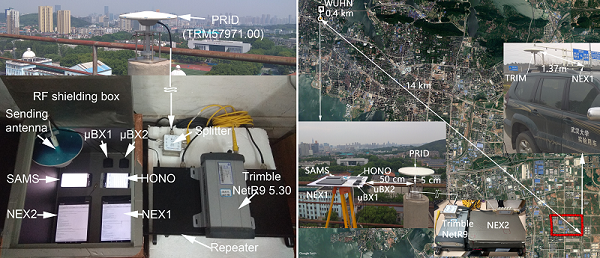
The decreasing size and shrinking cost of GNSS (Global Navigation Satellite System) chipsets have been facilitating their embedment into devices such as smartphones, wearables, shared bicycles, and vehicles. However, mass-market chipsets can only achieve 2-3 m positioning accuracy, which can degrade to 10 m or worse in case of adverse multipath conditions. With the release of Android 7 in 2016, Google announced that the raw GNSS measurements in Android smart devices could be exported and used through the API (Application Programming Interface) at the application level. That has been catalyzing the innovation of high-precision positioning using the democratized low-cost handset for mass-market applications. In particular, mobile- and safety-related applications, e.g., multimodal logistics and mobile health diagnosis, can potentially benefit from sub-meter or better positioning precisions, while a sub-decimeter or centimeter precision available at smartphones may facilitate semi-professional tasks such as personal or crowd-sourced mapping.
With this opportunity, in 2018, we comprehensively evaluated the signal characteristics and positioning performance of the raw multi-GNSS measurements of Nexus 9, Huawei Honor V8 and Samsung S8, and successfully connected the external antenna to these smart devices. In 2019, we found two unique error characteristics of the available Nexus 9 carrier phase: anomalous "jagged" distribution and random initial phase bias, and provided the thermal noise model parameters of code tracking loop (DLL) and phase tracking loop (PLL) for different smart devices. In the same year, we proposed an improved hatch filter algorithm towards sub-meter positioning using only Android raw GNSS measurements without external augmentation corrections. Subsequently, we developed an application named "Pride-Location App" based on the raw GNSS observations of Android smartphones and the ultra-fast orbit and clock products provided by IGMAS Analysis Center. This application has a series function, such as recording the raw GNSS observations of Android smartphones, displaying the precise position on the map and logging the ultra-fast ephemeris products after interpolation. In the following research, we will further discuss and study the feasibility of resolving Android GNSS carrier-phase ambiguities.
Related Works
1.Characteristics of raw multi-GNSS measurement error from Google Android smart devices. GPS Solutions (2019)
2.An Improved Hatch Filter Algorithm towards Sub-Meter Positioning Using only Android Raw GNSS Measurements without External Augmentation Corrections. Remote Sensing (2019)
3.A Comprehensive Assessment of Raw Multi-GNSS Measurements from Mainstream Portable Smart Devices. ION GNSS+ (2018)
Copyright PRIDELAB IN GNSS CENTER , Wuhan University Visits:236294 Powered by Truesing